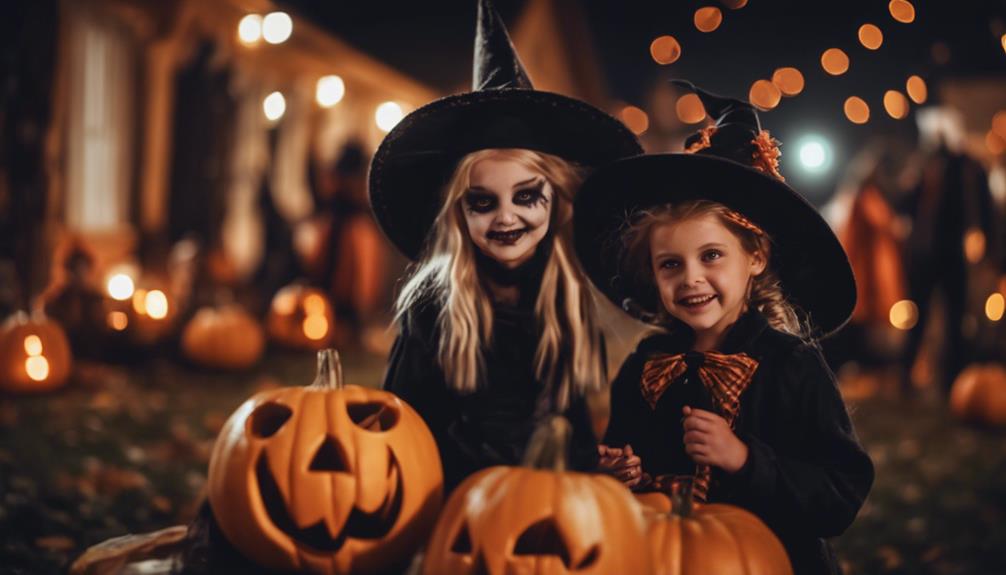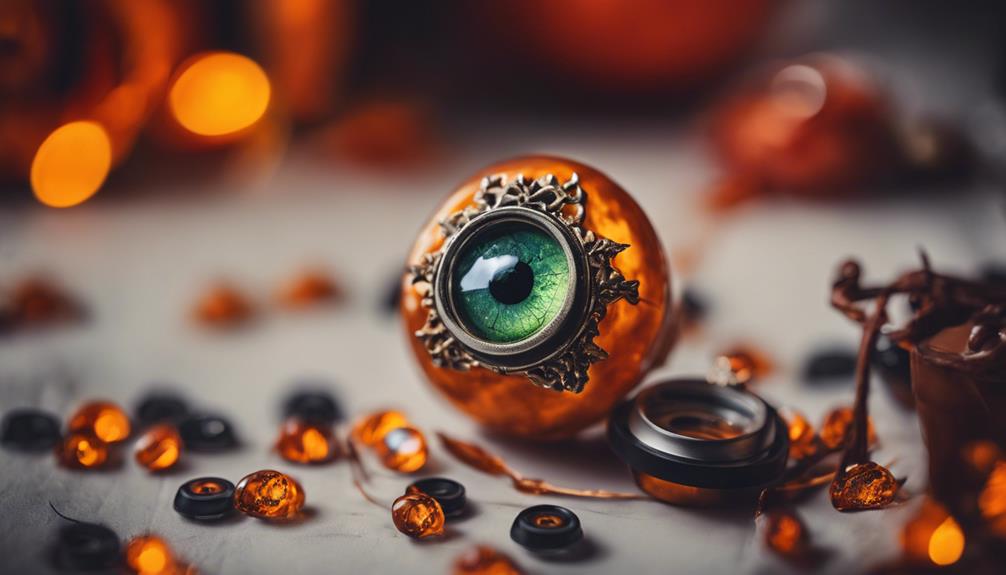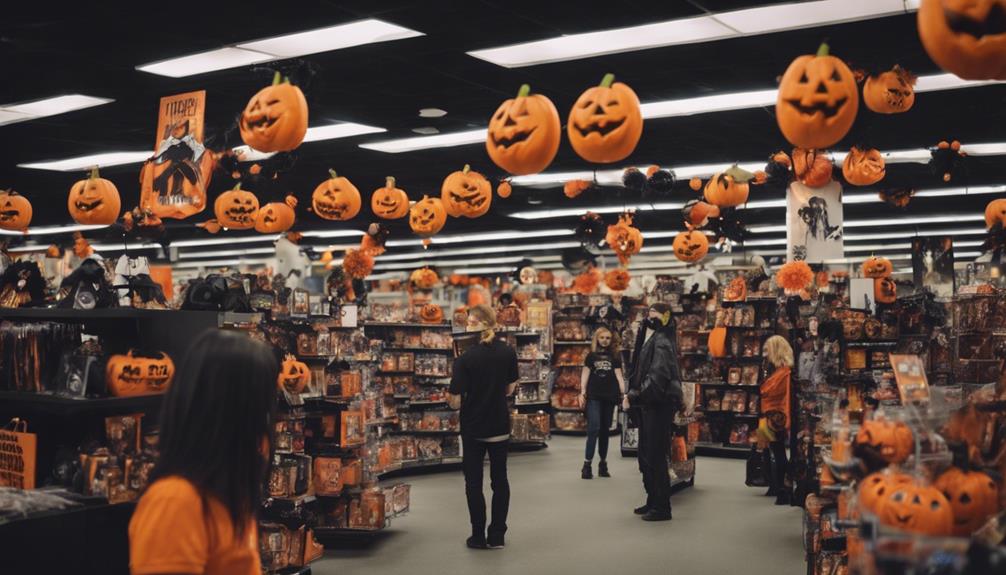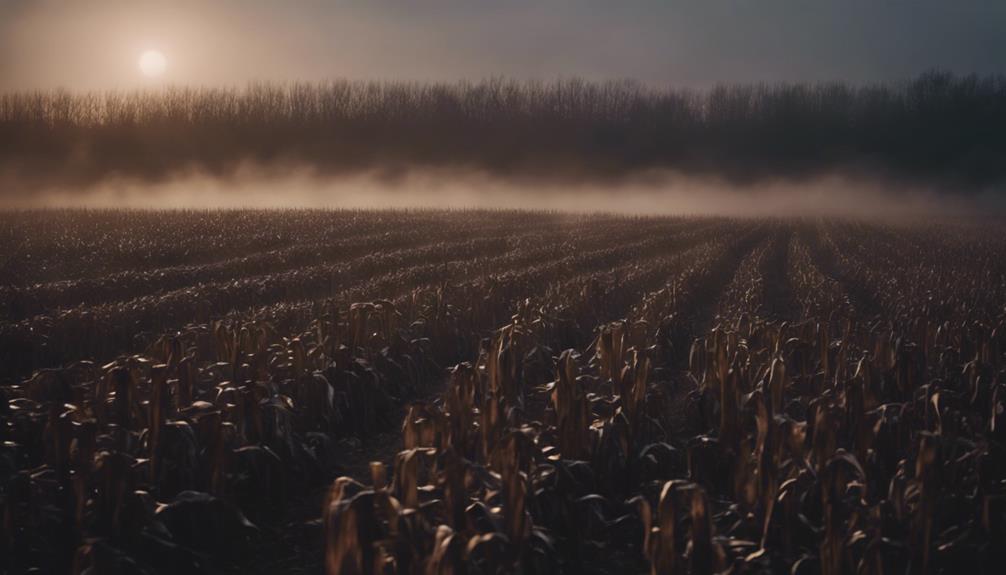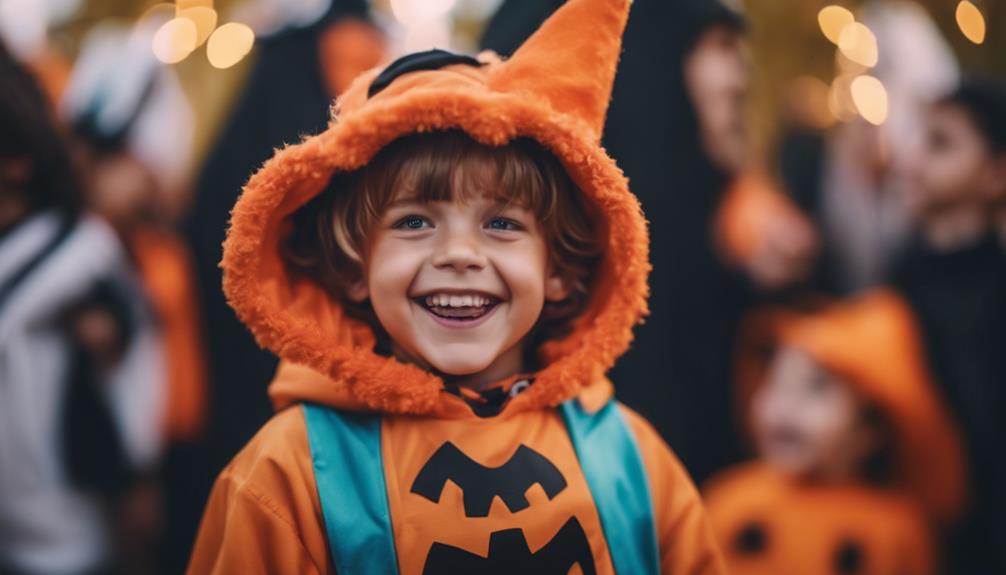In Germany, Halloween is a fascinating blend of old traditions and new influences. Celebrate with spooky decorations, costumes, and exciting events. Look for jack-o-lanterns made from beets, and enjoy the Hexennacht festival on April 30th. Kids go trick-or-treating as they say, 'Sweets or sours,' for treats. Join themed parties with music, drinks, and themed activities. Discover unique German costumes and a scarier vibe compared to American Halloween. Embrace the cultural nuances and community spirit that make German Halloween celebrations distinct. More details await to enrich your understanding of this intriguing mix of traditions and customs.
Key Takeaways
- German Halloween blends traditional customs with American influences.
- Celebrations include costumes, parties, and eerie decorations.
- Children go trick-or-treating saying "Sweets or sours."
- Themed costume parties and club events are popular.
- Embracing local customs and community events shapes future celebrations.
Halloween Origins in Germany
Halloween in Germany traces its origins back to the ancient Celtic festival of Samhain, marking the shift from the harvest season to winter. Introduced as a commercial holiday in 1991 by toy retailers aiming to boost post-carnival sales, Halloween gradually gained popularity across Germany. Dieter Tschorn, a PR consultant, played a pivotal role in popularizing Halloween through his marketing endeavors in the 1990s. This spooky celebration in Germany is a unique blend of traditional German customs and American influences, focusing on costumes, parties, and eerie decorations.
Despite initial resistance to its commercial nature, Halloween has become a significant and widely celebrated holiday in Germany. The festivities often include costume parties, pumpkin carving, haunted house visits, and trick-or-treating. Families and friends gather to enjoy the spooky ambiance, sharing treats and creating lasting memories. So, when Halloween approaches in Germany, embrace the spirit of this holiday and immerse yourself in the fun and excitement it brings.
Traditional German Halloween Practices

Traditional German Halloween practices showcase unique customs. Carving jack-o-lanterns from large beets (Futterrüben) is a historical practice deeply rooted in German Halloween celebrations.
The long-standing tradition of Rübengeistern, dating back to the 1890s, highlights the blend of American influences and traditional German observances during Halloween in Germany.
German Halloween Customs
Rooted in historical traditions and showcasing a unique Bavarian practice, German Halloween customs feature the intriguing tradition of Rübengeistern, where jack-o-lanterns are crafted from large beets in southern Germany. This historical practice dates back to the 1890s, adding a touch of old-world charm to modern Halloween celebrations.
When exploring German Halloween customs, you'll find a mix of spooky costumes that often lean towards the frightening rather than the playful. Homemade costumes are common, adding a personal touch to the festivities. Here are three key aspects to take into account:
- Rübengeistern Tradition: Discover the art of making jack-o-lanterns using large beets, a unique Halloween practice deeply rooted in German history.
- Spooky Costumes: Embrace the spooky side of Halloween with costumes that reflect a blend of American influences and local German traditions, offering a different experience from the colorful Fasching attire.
- Homemade Creations: Join in the fun by crafting your own Halloween costume, a popular choice among Germans that adds a creative flair to the holiday celebrations.
Festive Halloween Traditions
Embrace the vibrant and enchanting spirit of German Halloween festivities through the age-old tradition of crafting intricate jack-o-lanterns from large beets, a practice deeply ingrained in the cultural fabric of southern regions. The Rübengeistern tradition, originating in the 1890s, sees locals carving spooky lanterns out of beets instead of pumpkins, adding a unique touch to the Halloween celebrations in Germany. In southern Germany, Halloween costumes tend to lean towards the scarier side compared to other regions, reflecting a more traditional approach to the holiday. The fusion of American influences with German customs during Halloween results in a one-of-a-kind festive atmosphere, where history and modernity intertwine seamlessly. The historical roots of Rübengeistern highlight a distinctive aspect of German Halloween traditions, showcasing the creativity and ingenuity of the local communities in celebrating this spooky holiday.
| German Halloween Traditions | |
|---|---|
| Crafting jack-o-lanterns from large beets | Scarier costumes in southern Germany |
| Rübengeistern tradition in southern regions | Blend of American and German influences |
Hexennacht: German Witches Night
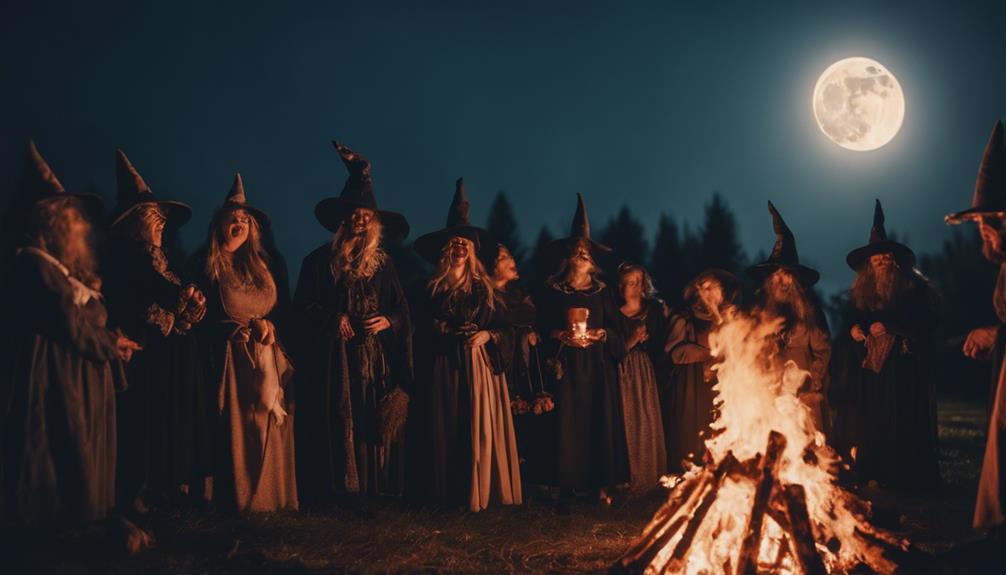
On April 30th each year, Germans partake in Hexennacht, also known as German Witches Night, a tradition rooted in expelling witches and evil spirits from communities. This unique event has evolved from ancient practices involving bonfires and dancing to modern-day community carnivals.
Here are three key aspects to help you understand Hexennacht better:
- Historical Significance: Hexennacht traces back to the belief that on the night before May Day, witches gathered to cause mischief. By participating in this tradition, communities aimed to drive away these malevolent spirits and secure a prosperous spring.
- Modern Celebrations: Today, Hexennacht is celebrated with a mix of age-old customs and contemporary activities. Teenagers often engage in pranks such as doorbell ditching, throwing eggs, spreading mustard, and wrapping cars in toilet paper to add a playful twist to the night.
- Community Engagement: The spirit of Hexennacht fosters a sense of togetherness as neighbors come together to ward off evil spirits and enjoy the festivities, creating a bond that strengthens community ties.
Trick-or-Treating in Germany
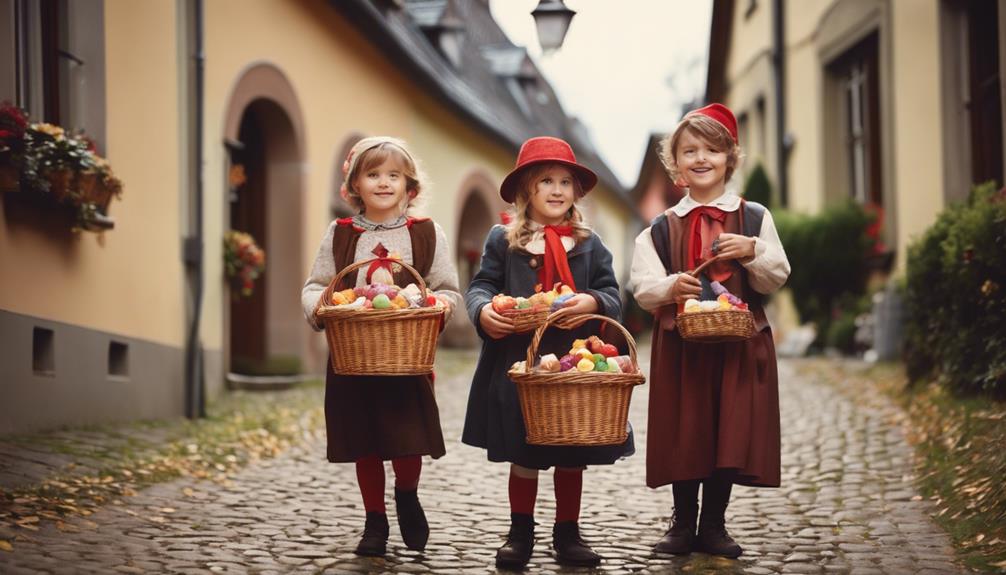
Trick-or-treating in Germany, known as 'Um die Häuser ziehen', involves children going door-to-door saying 'Sweets or sours' to collect treats. During this fun tradition, kids can also recite longer rhyming phrases to receive their candy. These Halloween phrases in Germany aren't only a way to score sweets but also add to the festive spirit of the holiday.
It's common to find neighborhoods buzzing with activity as children excitedly make their rounds for goodies. If you're out trick-or-treating in Germany, keep an eye out for decorated pumpkins outside homes, as they often signal that the residents are participating in the Halloween fun.
Halloween Parties and Events
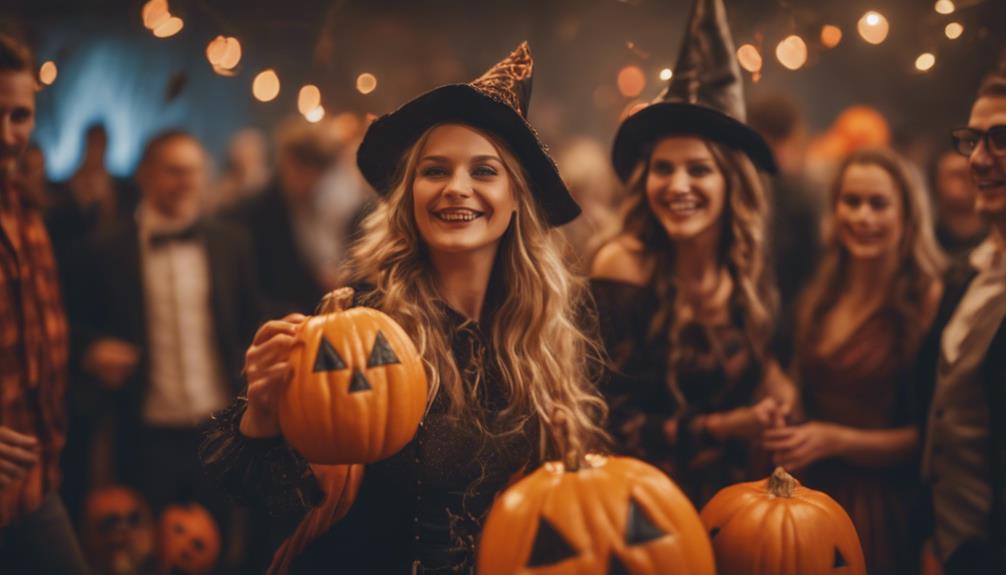
Themed costume parties and club events are the primary ways Halloween is celebrated in Germany. These events offer a fun and spooky atmosphere where people can dress up in elaborate costumes and enjoy the festivities.
Here are three key points to ponder about Halloween parties and events in Germany:
- Halloween-themed parties: Germans love to embrace the Halloween spirit by attending themed parties where they can showcase their creativity through costumes and makeup. These parties often feature music, decorations, and special drinks to enhance the spooky ambiance.
- Popular Halloween events: Germany is home to various popular Halloween events that draw crowds looking for a thrilling experience. From actors dressed as ghouls to haunted houses and themed activities, these events provide a unique way to celebrate the holiday.
- Halloween party venues: Some notable Halloween party venues in Germany include the Burg Frankenstein celebration near Darmstadt and the Movie Park Horror Fest near Essen. These locations offer immersive experiences that cater to Halloween enthusiasts of all ages.
Pumpkin Carving in German Tradition
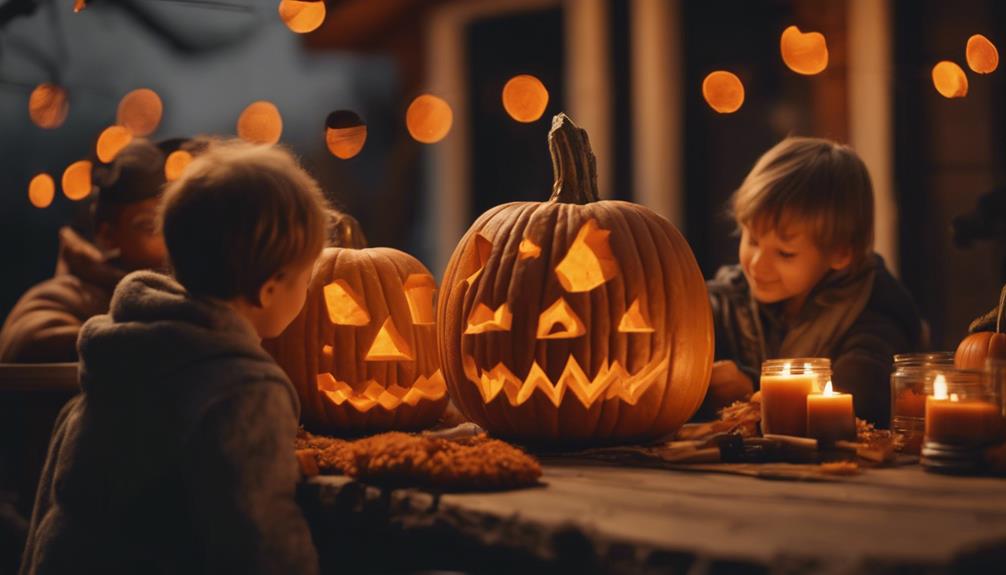
Exploring the world of German Halloween traditions beyond the vibrant parties and events, a remarkable custom that fascinates many is the art of pumpkin carving, known as Kürbisschnitzen. In Germany, pumpkin carving for Halloween has evolved into a beloved tradition where families and individuals come together to create intricate designs on pumpkins, turning them into whimsical Jack-O-Lanterns. The practice of Kürbisschnitzen has gained popularity over the years, with many embracing the creative process of transforming simple pumpkins into spooky works of art.
To give you a glimpse of the creativity involved in Kürbisschnitzen, here's a visual representation of some common pumpkin carving designs:
| Traditional Jack-O-Lantern | Spooky Witch | Creepy Cat |
|---|---|---|
|  |  |  |
Whether you're a beginner or a seasoned pro, pumpkin carving kits and tools are easily accessible in stores across Germany, making it convenient for everyone to partake in this festive tradition. So, grab a pumpkin and let your imagination run wild this Halloween!
Modern Halloween Trends in Germany
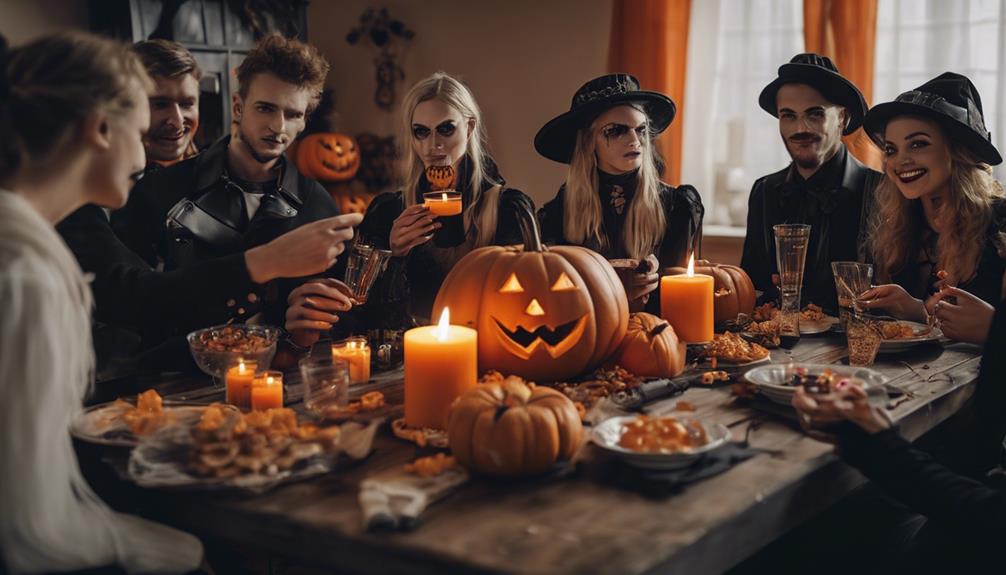
In modern Germany, Halloween trends have evolved to include a diverse range of themed costume parties and club events. This shift in celebration style highlights a blending of traditional customs with more contemporary approaches to the holiday. Here are three key trends shaping Halloween in Germany today:
- Pumpkin Festivals: Families in Germany often come together to enjoy pumpkin festivals during the Halloween season. These events feature various activities like pumpkin carving contests, pumpkin-themed foods, and decorations, offering a festive atmosphere for all ages to enjoy.
- Carved Pumpkins: Carving pumpkins is a widespread practice in Germany, not only for decorative purposes but also for culinary use. The tradition of intricately carving pumpkins has become a popular way to showcase creativity and add a spooky touch to Halloween celebrations.
- Themed Merchandise: The commercial aspect of Halloween in Germany is significant, with retailers introducing a wide array of themed merchandise tailored to the holiday. From spooky decorations to costumes and accessories, the availability of Halloween-themed products contributes to the overall festive spirit of the season.
Cultural Significance of Halloween in Germany
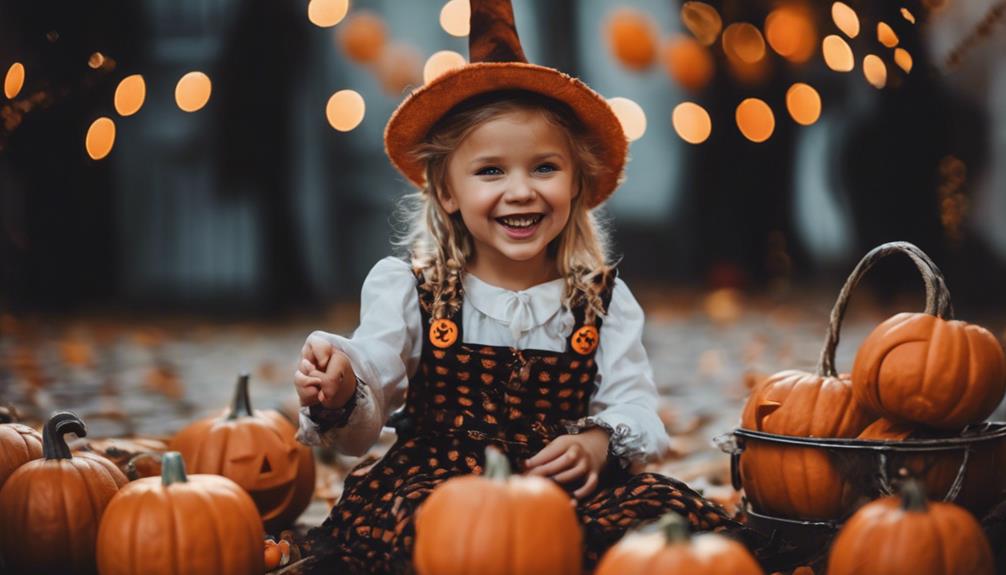
Having explored the modern Halloween trends in Germany, it's evident that the cultural significance of Halloween in the country reflects a blend of traditional roots with contemporary influences. Halloween in Germany has its origins in the ancient Celtic festival of Samhain, which has evolved over time into a commercialized holiday.
The introduction of Halloween in the 1990s sparked discussions about cultural appropriation and the commercialization of traditional customs. German Halloween celebrations often mix American influences with local traditions, resulting in a unique cultural amalgamation. While some Germans embrace Halloween as a fun and spooky occasion, others view it as a commercial import that clashes with traditional holidays like Saint Martin's Day.
Despite varying opinions, Halloween events and parties have gained popularity in Germany, particularly among younger generations. This blend of cultural traditions and commercialization has shaped how Halloween is celebrated in Germany, highlighting the country's ability to adapt and integrate diverse influences into its own customs.
Comparing German and American Halloween

When comparing German and American Halloween celebrations, the differences in costumes, trick-or-treating customs, and target demographics are immediately noticeable.
- Costumes: In Germany, Halloween costumes tend to be more gruesome and scary, reflecting a darker theme compared to the colorful and creative costumes often seen in America.
- Trick-or-Treating: Trick-or-treating in Germany involves a different approach, with phrases like 'Sweets or sours' or longer rhyming verses, unlike the simple 'Trick or treat' used in America.
- Target Demographics: Halloween in Germany is popular among adults who often celebrate at themed costume parties and clubs, whereas in America, the holiday is enjoyed by people of all ages.
In both countries, pumpkins and decorations play a role in the festivities, but the cultural nuances and emphasis on different aspects make the celebrations distinct. While the commercial aspect of Halloween is significant in Germany, focusing on themed events and parties, America retains a strong tradition of widespread trick-or-treating culture across all age groups.
Future of Halloween Celebrations in Germany
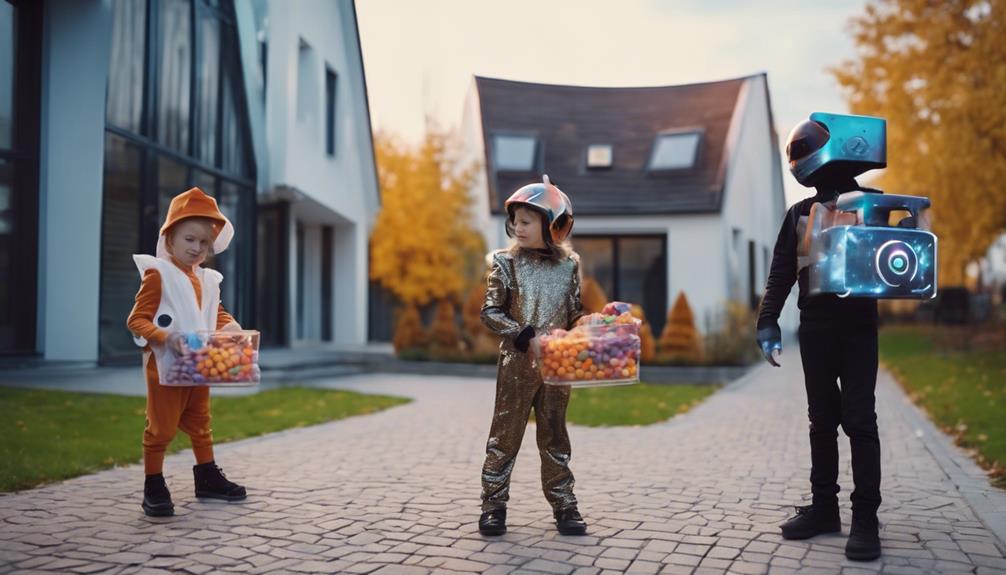
The future of Halloween celebrations in Germany appears to be shaped by a mix of evolving traditions, increasing community participation, and significant commercial influences.
As the holiday continues to integrate with local customs, you may notice a surge in themed events and activities that cater to various preferences.
Keep an eye out for the blending of traditional German holidays with global Halloween practices, creating a unique and diverse celebration experience in the years to come.
Evolution of Traditions
As Halloween celebrations in Germany continue to evolve, expect to see a blend of traditional German holidays with American influences shaping the future festivities. This evolution reflects a mix of cultural influences and modern trends, creating a unique and exciting celebration for all ages.
Here are three key aspects to take into account as Halloween traditions in Germany continue to develop:
- Commercialization and Adaptation: The future of Halloween in Germany may involve further commercialization as businesses capitalize on the growing popularity of this holiday. This commercial aspect could lead to the adaptation of traditional customs to suit modern consumer trends.
- Embracing Local Customs: While American influences play a significant role, Germans are also incorporating their local customs into Halloween celebrations. This blend of traditions adds a distinctive touch to the festivities, creating a rich tapestry of cultural experiences.
- Focus on Community Events: Future Halloween celebrations in Germany are likely to emphasize community events, themed parties, and creative costume ideas. This communal approach fosters a sense of togetherness and shared enjoyment, making Halloween a highly anticipated event on the social calendar.
Local Community Involvement
Embracing local customs and fostering community engagement are key elements shaping the future of Halloween celebrations in Germany. Local community involvement plays a crucial role in enriching the spooky holiday experience for residents across the country.
From neighborhood events to organized parties, Germans come together to celebrate Halloween in various ways. Many towns and cities host pumpkin festivals, where residents can enjoy carving pumpkins and showcasing their creations. Additionally, costume parades are a popular way for communities to gather and showcase their spooky and creative outfits. These events not only provide entertainment but also foster a sense of togetherness and fun among participants.
Community centers, clubs, and cultural associations often take the lead in organizing Halloween-themed activities, further enhancing the community spirit. By participating in these local festivities, residents strengthen community bonds, express their creativity, and share a collective love for the Halloween season.
Looking ahead, increased collaboration between local businesses, schools, and residents may further enhance the festive spirit of Halloween celebrations in Germany.
Commercial Influences
Pumpkin festivals and costume parades are just the beginning of how Germany's Halloween celebrations are evolving with the increasing influence of commercial interests. The commercialization of Halloween in Germany is evident through various means:
- Retailers: Businesses in Germany capitalize on Halloween by offering a wide range of costumes, decorations, and themed merchandise to meet the growing consumer demand for the holiday.
- Marketing Campaigns: Marketing campaigns by retailers play a significant role in promoting Halloween as a consumer-driven holiday in Germany, enticing individuals to participate in the festivities through special promotions, discounts, and exclusive products.
- Themed Events: The commercial aspect of Halloween in Germany is reflected in the proliferation of themed events, parties, and attractions, catering to those seeking immersive and entertaining experiences during the holiday season.
These commercial influences continue to shape the future trajectory of Halloween celebrations in Germany, despite some cultural resistance to the increasing commercialization of the holiday.
Frequently Asked Questions
Is There Trick or Treat in Germany?
Yes, there's trick-or-treating in Germany, known as 'Um die Häuser ziehen.' Children go door-to-door saying 'Sweets or sours' for treats. Longer rhyming phrases can be recited to get candy, and neighborhoods may have pumpkin decorations to show candy availability.
Trick-or-treating is a common and fun activity in many German neighborhoods during Halloween. It's a delightful way for kids to enjoy the holiday and collect some treats along the way.
Is Halloween a Day off in Germany?
In Germany, Halloween isn't a day off. October 31st is a regular working day, with schools and businesses operating as usual.
While Halloween is celebrated in Germany, it doesn't warrant time off work or school. Germans typically observe Halloween in the evening after work or school hours due to its non-official status.
How Do You Say Happy Halloween in Germany?
To wish someone a happy Halloween in Germany, you can say 'Frohes Halloween' or 'Happy Halloween.'
It's also common to use 'Schauriges Halloween' for 'Spooky Halloween' or 'Gruseliges Halloween' for 'Creepy Halloween.'
For a more traditional greeting, you might hear 'Gruseliger Tag der Geister und Hexen.'
And if you're looking to go trick-or-treating, remember to say 'Süßes oder Saures,' which is the German version of 'Trick or Treat.'
Enjoy the spooky celebrations!
How Do You Say Trick or Treat in Germany?
When you're in Germany and it's Halloween, you'd say 'Süßes oder Saures' to join in on the trick-or-treating fun. This phrase, meaning 'Sweet or Sour,' is the local version of 'Trick or Treat.'
By using 'Süßes oder Saures,' you'll be embracing the playful and traditional spirit of Halloween in Germany. Kids often say longer rhymes or jokes to get treats, adding a bit of charm to the festivities.
Enjoy your Halloween treat hunting!
Conclusion
To sum up, Germany celebrates Halloween with a mix of traditional practices and modern trends. From Hexennacht to trick-or-treating, Germans have embraced this spooky holiday in their own unique way.
As the cultural significance of Halloween continues to grow, it's clear that Germans are keeping the spirit alive.
So, whether you're in Germany or the US, remember: 'When in Rome, do as the Romans do' – or in this case, 'When in Germany, celebrate Halloween like a German!'
